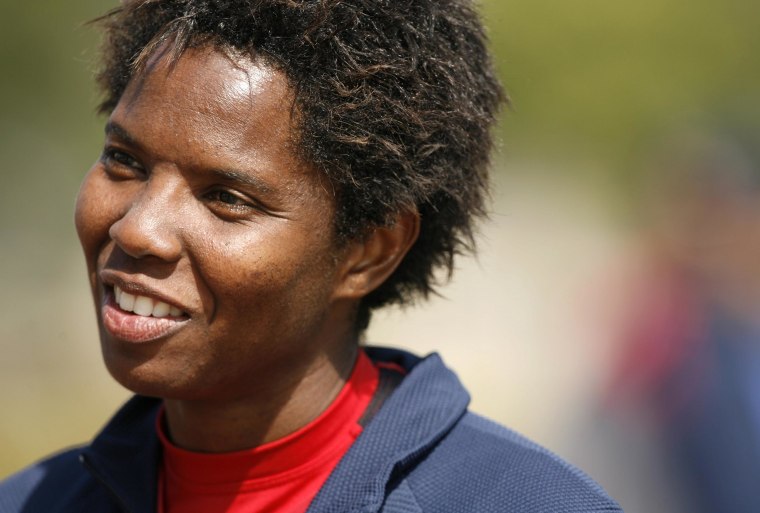A bad head injury forced women’s soccer gold medalist Briana Scurry to resort to experimental surgery to ease her blinding headaches. She thinks it worked, but she still suffers from anxiety, depression and other symptoms.
Scurry told a hearing in Congress on Thursday that officials are ignoring statistics that show soccer players have a high risk of concussions.
“Officials need to take their heads out of the sand a little bit and know this is affecting our sport, too,” Scurry told a hearing of a House Energy subcommittee.
California Rep. Henry Waxman, a Democrat who announced earlier this year that he is retiring from Congress, brought together experts, sports leaders and victims to paint a picture of a crisis that has caught a lot of attention, but one with few immediate solutions.
“I struggled with intense piercing headaches that were so bad that by the evening it was all I could do to not cry myself to sleep,” said Scurry, who helped her team win two Olympic gold medals.
“I recently moved to (Washington), D.C., to have bilateral occipital nerve surgery at Georgetown (University) to eliminate severe headaches that plagued me daily. Fortunately, the surgery appears to have helped me, however I'm still being treated for symptoms such as lack of concentration, balance issues, memory loss, anxiety, and depression,” she said.
“In September I was alarmed to learn that the number of reported concussions in soccer was second highest in the United States, with only American football having more cases.”
A concussion cost lacrosse player Ian Heaton two years of his high school career, and he’s still not back to 100 percent, either, he told the committee. “I have spent the two-and-a-half-years since my concussion slowly regaining organizational skills, the ability to learn and retain information, and most important, my personality,” said Heaton, who is now home-schooled.
He called for a change in the win-at-all-costs culture. “It’s not worth a couple of seasons of glory to lose the opportunity of your whole life,” he added. “While better equipment may decrease injuries, it is coaches, parents and players who have to back away from the need to win at all cost, or the fear of losing status on the team when out for an injury, and to be willing to recover fully before returning to play.”
There’s not much equipment can do to protect players, said Richard Cleland, assistant director for advertising practices with the Federal Trade Commission. The FTC investigated three companies that claimed to sell “safer” helmets. All three stopped making the claims.
University of Nebraska physicist Timothy Gay, who helped start a company that’s trying to make better helmets, described why it’s so hard.
“Two players who collide at full speed helmet-to-helmet are essentially experiencing the same forces to their heads that one of them would feel had he had a 16-pound bowling ball dropped on his head from a height of 8 feet,” Gay told the hearing.
And here’s why a facemask injury is so bad. “Then, your neck experiences a torque about like the one it would had you jammed your head into an industrial washing machine full of wet towels at full rotation,” Gay said.
